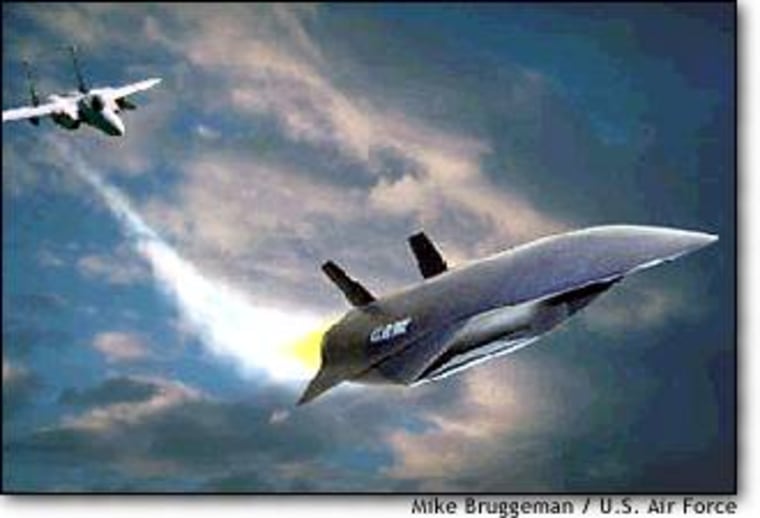The Pentagon is planning to build a hypersonic unmanned drone that could strike targets anywhere on earth from the continental United States in under two hours, according to a Department of Defense Web site.
The drone is part of a drive for “prompt global reach capability,” spurred by concern about threats from failed states and terrorism. It would be able to take off from a conventional runway with a 12,000-pound (5,443-kilogram) payload.
“This capability would free the U.S. military from reliance on forward basing to enable it to react promptly and decisively to destabilizing or threatening actions by hostile countries and terrorist organizations,” the Defense Advanced Research Projects Agency said.
The agency’s Web report said military engagements in Bosnia, Afghanistan and Iraq had underscored the limitations of the U.S. Air Force’s strike capabilities.
“While advancements in target identification and precision strike have been abundantly demonstrated, deficiencies in engaging and defeating time-critical and high-value, hard and deeply buried targets have also been revealed,” it said.
The need for such technology will be all the more necessary, the agency said, because the “current and future international political environment severely constrains this country’s ability to conduct long-range strike missions on high-value, time-critical targets” from outside the continental United States.
In other words, such technology would have been ideal for that opening bid of the Iraq war to kill Saddam Hussein had the United States been prevented, for diplomatic reasons, from operating from bases outside its own territory.
Inviting bids from contractors to develop the technology, DARPA said it would take over 20 years to develop the hypersonic cruise vehicle, which would be able to deliver a range of munitions to targets up to 9,000 miles (14,400 kilometers) away.
A near-term and cheaper option on the drawing board for the Pentagon’s Force Application and Launch from Continental United States program, known as FALCON, is a small launch vehicle that could both drop bombs and launch small military satellites into orbit.
These launchers, which the department envisages could be developed by around 2010, could also launch glide vehicles to strike deeply buried targets like bunkers with payloads of up to 1,000 pounds.
Michael Codner, director of military sciences at the Royal United Services Institute for Defense and Security Studies in London, said such projects are indeed within reach.
“The technology is available, but developing such a platform would take time and to do it in a huge rush would be extremely expensive,” he said. “Talking it up may be a way of getting congressional funding.”
In recent years the U.S. military has begun to make extensive use of slow-moving missile-armed Predator unmanned drones. In conflicts in Kosovo, Afghanistan and Iraq, the short-range Predator hit targets with pinpoint accuracy at low and medium altitudes.
